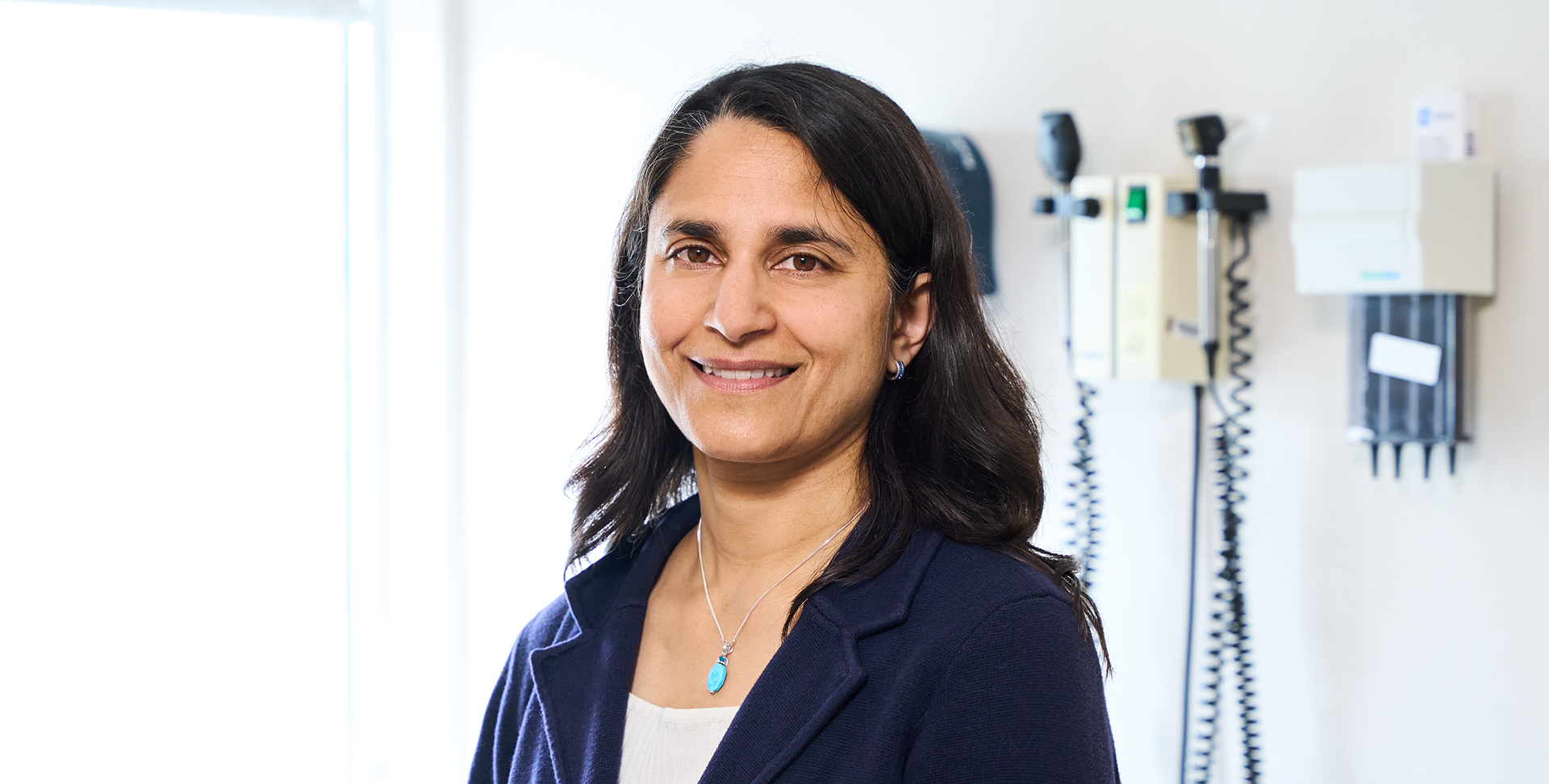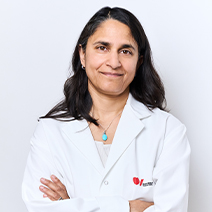
Working to prevent premature heart disease
Dr. Sonia Anand is studying a group of 10-year-olds, hoping to reduce risk for generations to come
Chapter 1 Inspired to investigate
Dr. Sonia Anand never met her maternal grandfather. He died of a heart attack at 57. Two of his brothers also died young from heart disease.
“He was in the prime of his life,” she says. “That really stuck with me in terms of why South Asians (people who originate from the Indian subcontinent) develop early heart disease. That started my research.”
Today Dr. Anand is a specialist in vascular medicine, which focuses on problems of the blood vessels. A renowned research leader, she holds the Heart and Stroke Foundation/Michael G. DeGroote Chair in Population Health Research at McMaster University in Hamilton. She studies the ways that heart and brain health is influenced by a range of factors including biology, sex and gender, age, ethnicity, socioeconomic status and more.
Chapter 2 Tracing the path of risk
She and her colleagues have uncovered the factors that put people of South Asian descent at the highest risk in the world from premature heart disease. Dr. Anand showed that South Asians living in Canada have an increased risk of abdominal obesity, abnormal cholesterol, and more pre-diabetes and diabetes – factors strongly associated with coronary artery disease.
“It turns out they're the same risk factors as for everyone else,” Dr. Anand says, “but they're in different frequencies in South Asians, and they happen earlier on in life.”
How do these risk factors develop? And how could we slow or prevent their development?
Dr. Anand is pursuing those answers among 1,000 Ontario children who were born to mothers of South Asian heritage. This research first tracked those mothers through their pregnancies, revealing that they experienced a much higher rate of gestational diabetes than do women of white European heritage.
Gestational diabetes increases the risk of future type 2 diabetes and cardiovascular disease for both mother and baby. Dr. Anand and a colleague showed there is a strong genetic link to the higher incidence of gestational diabetes; they are evaluating if a healthy lifestyle from the moment a child is born can lower this risk.
Since then, Dr. Anand’s team has followed the health of those children, measuring factors such as their amount of fat tissue, and fats and sugars in their blood. Now, as the children turn 10, they are coming back in for a physical examination, including ultrasound scanning of their blood vessels. The team is looking for early signs of atherosclerosis – the narrowing of arteries that can eventually lead to heart attacks.
Chapter 3 From knowledge to prevention
Dr. Anand wants to determine if having atherosclerosis at age 10 means you’ll develop earlier onset cardiovascular disease.
“Once we identify who’s at risk, we can provide direction to pediatricians and family doctors about when should cholesterol be screened, at what age.” This information can be used to develop interventions to lower risk factor levels in South Asian children and youth.
And the benefits could go further, she says. “By studying high-risk populations for heart disease, we can learn about the causes and consequences of early risk factor development, which can be used to develop prevention strategies — and may be applicable to the entire population.”
- Find out more about the risk factors for heart disease
- Learn more about Heart & Stroke research

Join my fight to prevent heart disease